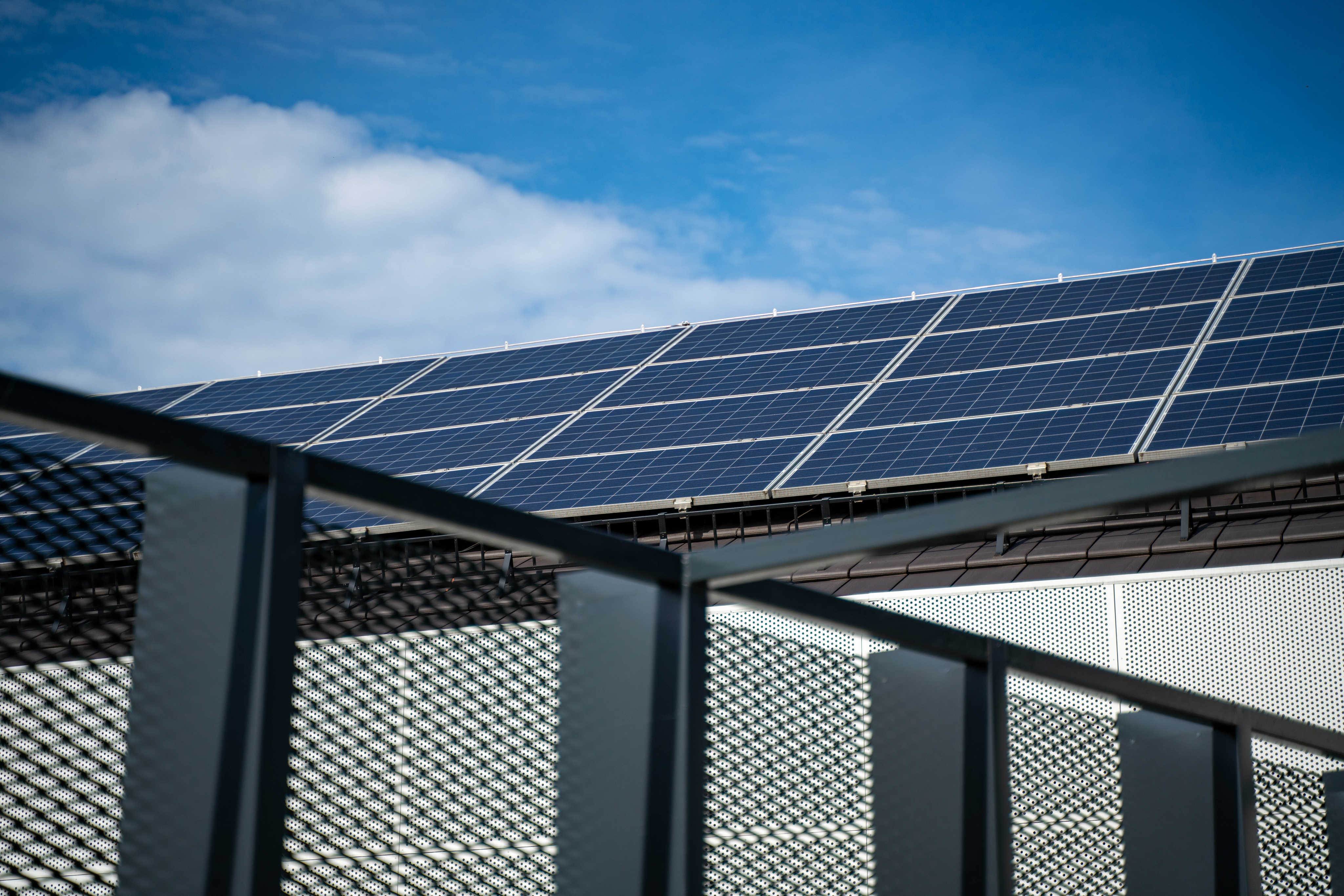
Have you ever wondered if a house that consumes twice as much energy really provides twice the comfort? This is a question that many homeowners are facing as energy costs continue to rise. While we all desire a comfortable and modern living space, wasting energy not only impacts our wallets but also has negative consequences for the environment. The reality is that many homes are overconsuming energy without necessarily providing commensurate comfort. So, how can we optimize energy use while ensuring—or even enhancing—our quality of life? The answer lies in understanding residential energy consumption and implementing smart solutions. In this article, we will explore how to assess the level of comfort in energy-intensive homes, discover optimization solutions that do not compromise comfort, and review the significant benefits of reducing energy consumption. Let's delve into the world of energy-efficient homes and explore this promising future trend together! 🏡✨

Defining a House that Consumes Twice the Energy
A house that consumes twice the energy refers to a residence that uses significantly more energy than the average home. Typically, these homes consume double the amount of electricity, gas, or other energy sources compared to a standard home of the same size and occupancy.
Environmental Impact of Excessive Energy Consumption
Excessive energy consumption has severe environmental consequences:
-
Increased greenhouse gas emissions: The burning of fossil fuels to generate electricity and heat homes releases greenhouse gases into the atmosphere, contributing to global warming.
-
Contribution to climate change: Greenhouse gases trap heat in the atmosphere, causing the planet's temperature to rise and leading to various climate change impacts.
-
Increased demand for fossil fuels: To meet the high energy demands of these homes, there is an increased reliance on fossil fuels, which are finite resources.
-
Air and water pollution: The extraction and combustion of fossil fuels contribute to air and water pollution.
Primary Sources of Energy Consumption in Homes
To better understand energy consumption in homes, let's examine the primary sources:
| Energy Source | Average Consumption Percentage |
| HVAC system (Heating, Ventilation, and Air Conditioning) | 40-50% |
| Water heating | 15-20% |
| Lighting | 10-15% |
| Appliances | 15-20% |
| Others | 5-10% |
HVAC systems (Heating, Ventilation, and Air Conditioning) often account for the largest portion of a home's total energy consumption. Understanding these consumption sources provides a comprehensive overview and enables us to identify effective energy-saving solutions.
Next, we will examine the level of comfort in energy-intensive homes and assess whether the comfort level is commensurate with the amount of energy consumed.

The misconception about the relationship between energy consumption and comfort.
Many people often believe that the more energy a house consumes, the more comfortable it is. However, this is a misconception. In reality, the level of comfort does not depend entirely on the amount of energy consumed. There are many other factors that determine the comfort and convenience of a home.
A comparison of amenities in low-energy and high-energy homes.
The following table provides a clearer picture
| Criteria | Low-energy Consumption Home | High-energy Consumption Home |
| Temperature | Stable temperature due to good insulation | Temperature can fluctuate significantly |
| Lighting | Optimized natural light | Highly dependent on electric lighting |
| Air quality | Good due to ventilation system | May be compromised due to constant air conditioning use |
| Operating cost | Low | High |
Factors Determining Home Comfort
Home comfort is influenced by a variety of factors, not solely energy consumption. Key elements include:
- Efficient space design: A well-planned layout maximizes functionality and comfort.
- Quality building materials: High-quality materials contribute to durability and overall home performance.
- Insulation and soundproofing: Effective insulation and soundproofing systems regulate temperature and reduce noise.
- Natural light and ventilation: Maximizing natural light and ventilation improves indoor air quality and reduces reliance on artificial lighting and cooling systems.
- Smart home automation: Automated systems enhance convenience and energy efficiency. By optimizing these factors, homes can achieve comparable or even higher levels of comfort without excessive energy consumption. This demonstrates that energy-efficient homes can still provide maximum comfort and convenience for occupants.

After understanding energy consumption and home comfort, let's explore solutions to optimize energy use while maintaining comfort. Here are some effective methods:
A. Changing Energy Usage Habits Adjusting daily habits can make a significant difference in energy savings:
- Turn off lights and appliances when not in use.
- Run washing machines and dishwashers with full loads.
- Adjust air conditioning temperature according to the season.
B. Harnessing Natural Energy Make the most of available natural energy:
- Open windows to take advantage of natural light and ventilation.
- Use curtains to regulate indoor temperature.
- Plant trees around your home for shade.
C. Improving Home Insulation Good insulation significantly reduces energy consumption:
- Install double-pane windows.
- Add insulation to walls and ceilings.
- Use insulating materials for floors.
D. Using Energy-Efficient Appliances Investing in energy-efficient appliances offers long-term benefits:
| Device | Benefit |
| LED light bulb | Saves up to 75% of energy compared to traditional incandescent bulbs |
| Inverter refrigerator | Reduces energy consumption by up to 30% |
| Inverter air conditioner | Saves energy and offers more precise temperature control |
These solutions allow you to optimize energy usage without compromising comfort. Next, let's explore the specific benefits of reducing energy consumption.

The benefits of reducing home energy consumption extend far beyond financial savings. By using energy more efficiently, we can improve indoor air quality, extend the lifespan of appliances, and help protect the environment. Let's break down these benefits:
- Improved indoor air quality: Less energy consumption means fewer emissions, leading to cleaner air and a healthier home.
- Longer-lasting appliances: Efficient use reduces wear and tear on appliances, saving you money in the long run.
- Environmental benefits: Reducing energy consumption helps combat climate change and conserve natural resources.
- Lower utility bills: Perhaps the most immediate benefit is the reduction in your monthly energy costs.
| Item | Potential annual savings |
| Electricity | 10-30% |
| Water | 5-15% |
| Gas | 5-10% |
Given these substantial advantages, reducing household energy consumption is becoming a growing trend. Let's delve into the future of energy-efficient homes.

The demand for energy-efficient homes has surged in recent years. Cutting-edge technologies and sustainable design principles are revolutionizing the construction industry, leading to more comfortable and environmentally friendly living spaces.
Sustainable design principles are at the forefront of modern architecture. By optimizing house orientation, harnessing natural light and ventilation, and employing efficient insulation, architects are creating homes that require less energy for heating and cooling.
Renewable energy systems such as solar panels and mini wind turbines are increasingly being integrated into home designs. This trend not only reduces reliance on the national grid but also generates clean, sustainable energy.
| Energy Source | Advantages | Disadvantages |
| Solar panels | No emissions, low operating costs | High initial investment costs |
| Mini wind turbines | Highly efficient in areas with strong winds | Subject to weather conditions |
| Geothermal energy | Stable, not weather dependent | Limited to specific geographic locations |
Manufacturers are developing a wide range of new building materials designed to improve energy efficiency and reduce environmental impact. Some examples include: insulated concrete, self-adjusting smart glass, solar-integrated tiles and bricks, and recycled materials from plastic waste.
Smart home technology is making it easier than ever to optimize energy usage. Intelligent energy management systems can automatically adjust various systems within a home, resulting in significant energy savings and increased comfort.
With these advancements, the future of homeownership is looking brighter. Energy-efficient homes offer not only reduced energy costs but also a more comfortable and sustainable living environment.

Consuming twice as much energy at home doesn't automatically translate to twice the comfort. Instead, we should prioritize optimizing energy use while ensuring a high quality of life. By implementing effective energy-saving measures, we can reduce our energy bills and help protect the environment.
Let's embrace a future of smart homes that are both energy-efficient and sustainable. Every individual effort counts in creating a more sustainable world. Let's start making a difference today by building a comfortable and environmentally responsible lifestyle.
Tags
Related news

10 Innovative Ways to Use IAQ Data for Healthy Buildings
Closing the Gap Between Data and Action For forward-thinking organizations, improving Indoor Air Quality (IAQ) is a strategic priority. IAQ...
View detail
Designing the Mindful Home: From Matter to Energy
A mindful home is not merely a place to live — it is a conscious space, where every line, material,...
View detail
Body – Mind – Qi: The Foundation of Healing Architecture
The home is not only a shelter for the body but also a space that nurtures the soul and life...
View detail





